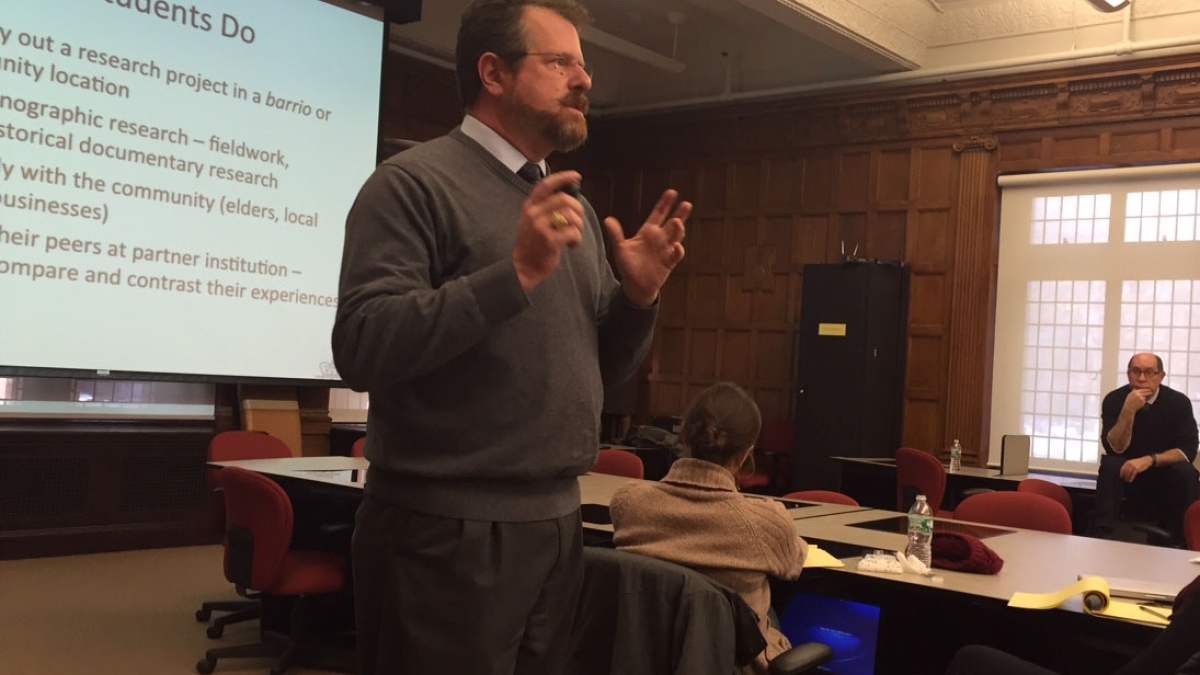Heritage language learning project reaches into community

Heritage language learners have access to an innovative way to share their cultural experiences and enhance their linguistic skills through a collaborative approach to education called the CIRCLE (Community, Identities, and Research through Collaborative Language Education) Project.
Creators Andrew Ross, head of Learning and Support Services in ASU’s School of International Letters and Cultures, and Stéphane Charitos, director of Columbia University’s Language Resource Center, introduced the project to colleagues at Yale University’s Center for Language Study last month.
According to Ross, the CIRCLE Project is a framework through which heritage language learners can approach identity, storytelling, and community. It is intended to bring together students from multiple institutions and have them create and share information collected in their home communities.
“The project offers innovative ways to conduct fieldwork, interviews, historical documentary research, and to be more engaged with community members and organizations outside of the classroom, all while interacting with partner schools,” Ross said.
The CIRCLE Project evolved from Ross and Charitos’ original collaboration, the Hispanidades Project, created in 2009 to explore ethnic heritage and identity issues in Spanish-language classrooms. During their presentation at Yale, Ross and Charitos showed a documentary that was conducted in Spanish and created by Hispanidades students. The story highlighted the culture, economics, and life of the Anglo and Hispanic communities in Surprise, Arizona, and is just one of many examples of potential projects CIRCLE students will be encouraged to do.
“We encourage the students to find a story that is meaningful to them, and to tell that story,” Ross said. “Usually, it’s a story with both intellectual and social meaning.”
ASU Spanish heritage language students who are socially engaged, committed to helping others, interested in learning to conduct research in the community, and interested in developing interviewing and storytelling skills in Spanish can enroll in a three-credit Spanish course called Hispanidades (SPA 394). The course explores Hispanic identity in a variety of places and social contexts including New York City, San Diego, Seattle, Chicago and the greater Phoenix metropolitan area.
The program places students with community service organizations to give them an idea of what that specific Hispanic community is like, beyond the superficial stereotypes. To broaden their perspectives, students will correspond with student colleagues engaged in similar explorations through other academic institutions to compare and contrast their respective findings, and they will ultimately create a mini-documentary to chronicle their experiences.
With plans to expand the program and partner with more collegiate institutions in the United States and Europe, Ross said the CIRCLE Project aspires to take the concept a step further by encompassing, not only Spanish heritage language learning but Chinese, Arabic and Hindi heritage language learning as well.
According to the Center for Applied Linguistics, a heritage language learner is “a person studying a language who has some proficiency in or a cultural connection to that language through family, community, or country of origin. Heritage language learners have widely diverse levels of proficiency in the language (in terms of oral proficiency and literacy) and of connections to the language and culture. They are different in many ways from students studying the language as a foreign language.”
The School of International Letters and Cultures is an academic unit of the College of Liberal Arts and Sciences.
Story by Allie Bice and Susan Kells